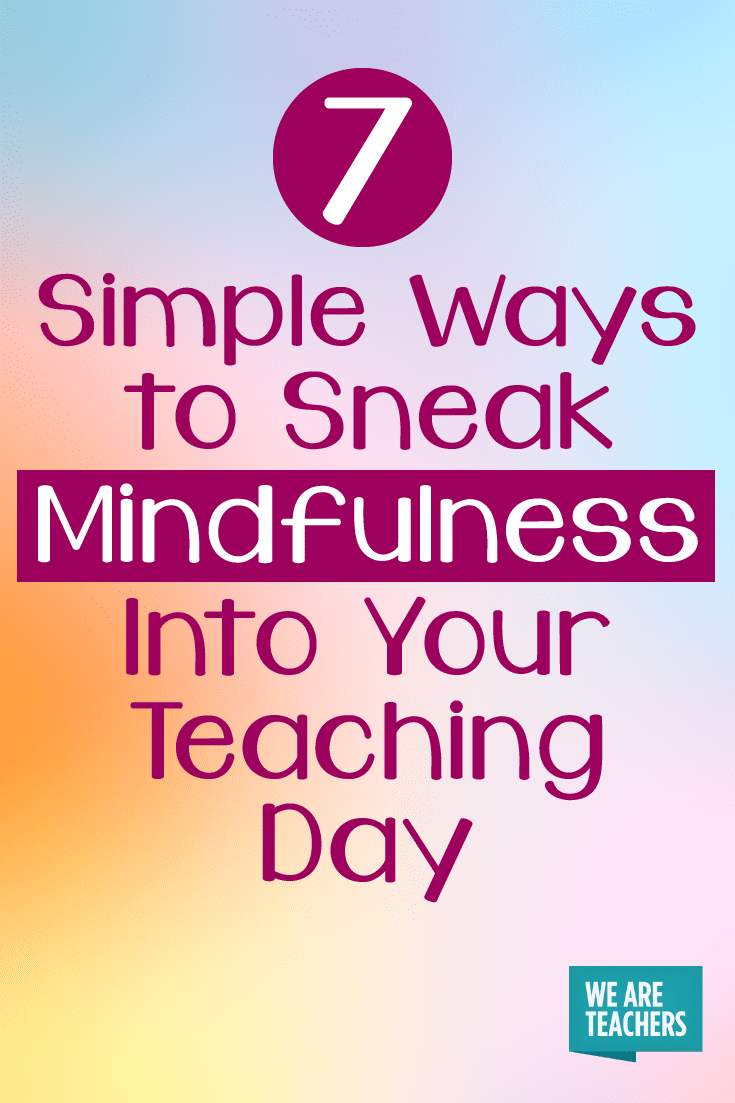Teaching is a juggling act. Days are filled with never-ending to-do lists of lessons, assessments, meetings, and more, not to mention the care and attention we give to dozens of children every day. With all of the demands of the job, it’s easy to see how teachers become exhausted and unbalanced. One way to stay healthy is to intentionally build in short, focused breaks throughout the day to practice mindfulness. When we practice mindfulness, we intentionally hit the pause button and turn our attention to nothing but the present moment. Here’s our simple guide to mindfulness for teachers, including seven practices that will help you find some much-needed calm amidst the madness of your hectic day.
1. Take a moment to breathe.
It sounds strange, but sometimes we get so caught up in our day that we actually forget to breathe. At the very least, we get caught in a rhythm of shallow breathing that leaves our bodies and minds woefully short of the oxygen it requires to function optimally. When you find yourself in this state, take a pause. Close your eyes and breathe in and out slowly and deeply five times. It will take less than a minute, but it will do wonders for your nervous system.
[Check out 23 Classroom Yoga Photos for even more inspiration.]
2. Listen carefully.
Every once in a while you catch a rare moment of silence: in between periods, when your students are at lunch, or even when you’re alone in the staff bathroom. Don’t let it pass you by! Take a moment to focus intently on the absence of racket in your ears and in your head and feel your breathing deepen and your pulse slow.
3. Ground yourself.
Stand up straight with your arms resting comfortably at your sides. Place your feet shoulder-width apart and focus on feeling the bottoms of your feet grounded on the floor below you. Close your eyes and scan your body from bottom to top, sensing any places that feel stiff or tender. Try to breathe into those areas to release any tension.
4. Use your sense of smell.
Plug in an essential oil diffuser and add any of these calming essential oils to it. If your school is a fragrance-free environment, keep a small bottle of your favorite scent in your desk drawer and inhale deeply when you need a calming break.
5. Try a change of scenery.
Nothing grounds a person faster than connecting with nature. Even when you’re indoors, you can still connect. Sneak a peek out the window every now and then. Pause and focus on the blue sky, the green leaves on the trees, or the bright sunlight outside. Take just a moment to block everything else out and soak it in. If you are unfortunate enough to work in a windowless environment, zone out with one of these beautiful videos or choose one of these serene images as a screensaver for your computer.
6. Walk mindfully.
Whenever you leave your classroom, instead of racing through the hall with a million things on your mind, try to slow your pace and just focus on putting one foot in front of the other. Count your steps silently, if that helps. Use your movement as an opportunity to catch your breath and clear your mind as you transition from one space to another.
7. Make an authentic connection.
On super busy days it’s easy to speak at your students instead of with them. Make it a goal to genuinely connect with individual students whenever you can, even if it’s just a quick greeting in the morning. Look straight into their eyes and listen carefully to what they say, giving them your full focus, if just for a few moments. Here’s a guide to learning to love even your most difficult students.
What are some hints that you can share on mindfulness for teachers? Come and share in our WeAreTeachers HELPLINE group on Facebook.
Plus, 57 Simple Mindfulness Activities for Kids.


